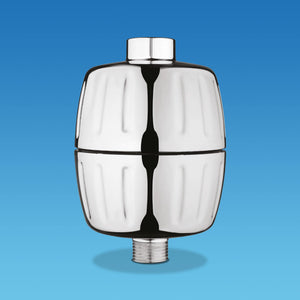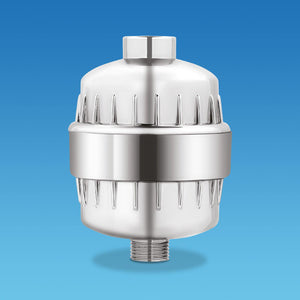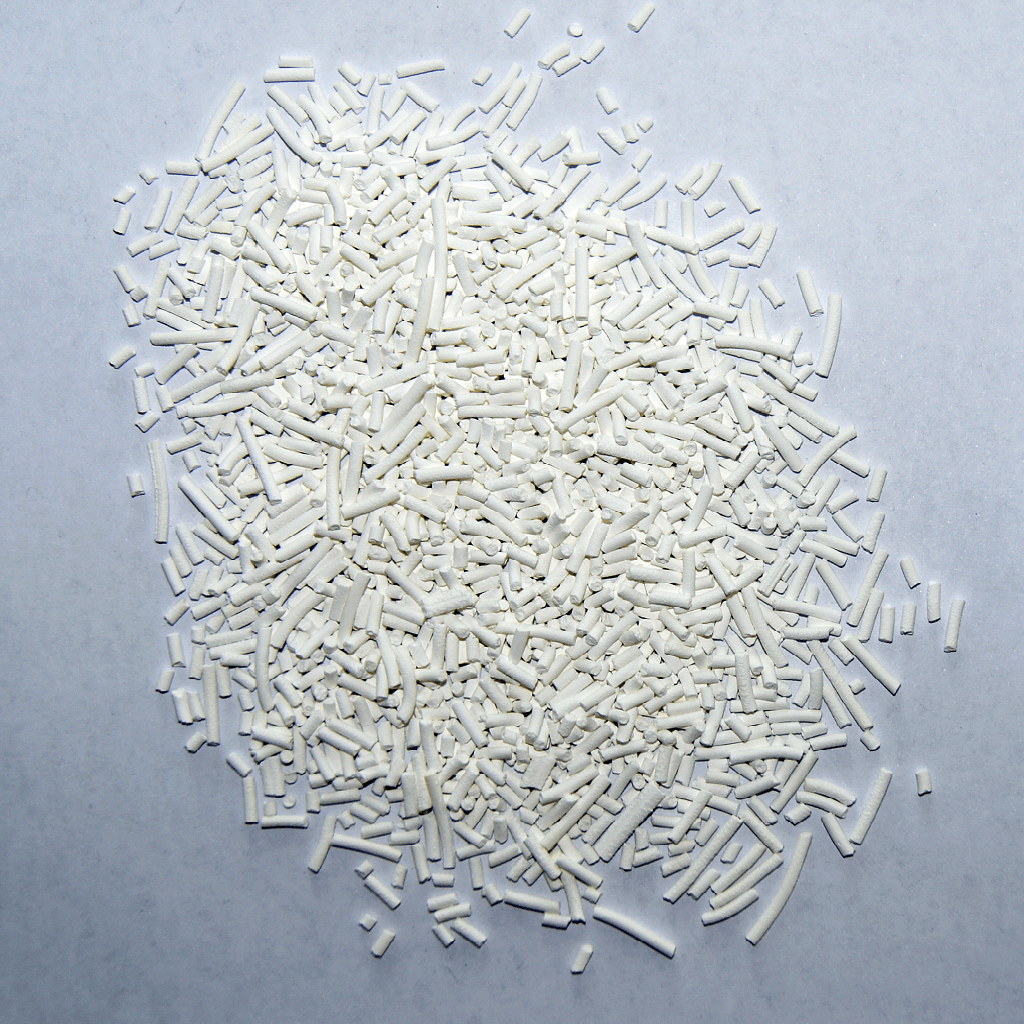Calcium sulfite is a key component in water filtration, especially for shower filters that help reduce chlorine and other impurities in tap water.
With increasing concerns over water quality and the chemicals in our water supply, understanding how calcium sulfite and other elements in filters work is essential for maintaining healthy skin, hair, and overall wellness.
In this article, we’ll dive into the science behind calcium sulfite, how it works in filters, and why it might be the right choice for your home.
What is Calcium Sulfite and Why Is It Important?
Calcium sulfite is a chemical compound that’s particularly effective at removing chlorine from water. Unlike other filtration materials, calcium sulfite has a high capacity for absorbing chlorine, which makes it ideal for use in shower filters where chlorine levels in hot water can be problematic.
Regular exposure to chlorinated water, especially in showers where heat increases chlorine absorption through the skin and lungs, can lead to dry skin, hair damage, and skin irritation.
Using filters with calcium sulfite helps reduce these risks, making showering safer and healthier.
How Calcium Sulfite in Shower Filters Works to Remove Chlorine

When water passes through a calcium sulfite filter, the compound reacts with chlorine, converting it into a harmless chloride form.
This process is rapid and efficient, making calcium sulfite ideal for high-flow systems like showers where water exposure is brief. Additionally, calcium sulfite works effectively across various temperatures, meaning it’s equally efficient whether you prefer hot or cold showers.
Why Removing Chlorine from Shower Water Matters
Chlorine is often added to municipal water supplies to kill bacteria and other pathogens. While this makes drinking water safer, it can have drying effects on skin and hair.
Showering in chlorinated water strips away natural oils that protect the skin, leading to dryness and potential irritation. For those with sensitive skin or conditions like eczema, filtering chlorine can significantly improve skin comfort and health.
Comparing Calcium Sulfite to Other Filtration Media
While calcium sulfite is excellent for chlorine removal, other filtration materials are often combined in shower filters to achieve broader results:
-
Activated Carbon: Primarily removes organic compounds, bad tastes, and odors. Activated carbon is effective but performs best at removing impurities when water temperatures are lower.
-
Vitamin C: A powerful antioxidant that neutralizes chlorine, popular in certain shower filters for its skin benefits. Vitamin C works effectively in hot water, adding additional moisture benefits to your shower.
-
Calcium Sulfate: Similar to calcium sulfite but slightly less effective at removing chlorine. It’s often combined with calcium sulfite for balanced performance.
Each of these materials has unique benefits, but calcium sulfite’s ability to remove chlorine quickly and effectively in hot water makes it a popular choice for shower filters.
Benefits of Using a Shower Filter with Calcium Sulfite
A shower filter with calcium sulfite offers numerous benefits that enhance your showering experience and support your overall health and well-being.
Below is a detailed overview of the advantages of using such a filter:
-
Reduces Dry Skin and Hair Damage: By removing chlorine, calcium sulfite helps prevent the drying effects that chlorinated water can have on skin and hair.
-
Minimizes Skin Irritation: People with sensitive skin can benefit from filters that reduce chlorine and other chemicals, as they decrease the likelihood of skin irritation and dryness.
-
Preserves Natural Oils: By filtering out chlorine, calcium sulfite helps retain the natural oils that protect your skin and hair, improving their moisture and resilience.
-
Improves Air Quality in Your Shower: When chlorine interacts with hot water, it can create chlorine gas, which can irritate your respiratory system. A shower filter with calcium sulfite reduces chlorine gas in the shower area, enhancing air quality.
How to Choose the Right Shower Filter with Calcium Sulfite

When shopping for a shower filter, look for one that uses multiple filtration stages to maximize performance:
-
Filter Composition: A mix of calcium sulfite, activated carbon, and possibly Vitamin C is ideal for filtering chlorine, impurities, and other chemicals.
-
Filter Life: Some filters need replacing more frequently. Check the recommended lifespan of the filter and plan for regular replacement to ensure optimal performance.
-
Temperature Compatibility: If you prefer hot showers, ensure that the filter materials can perform effectively under high temperatures, which calcium sulfite can handle well.
-
Other Chemicals: For areas with hard water or additional contaminants, filters that target other impurities, like calcium and magnesium, can offer additional protection.
The Role of Calcium Sulfite in Protecting Your Hair and Skin’s Natural Moisture
Your skin and hair rely on natural oils to stay hydrated and protected. Chlorinated water strips these oils away, leaving skin dry and hair brittle. Calcium sulfite filters act as a barrier against chlorine, preserving these natural oils and helping your skin retain moisture.
This is especially valuable for people with sensitive or dry skin and for anyone who experiences frizzy or damaged hair due to water quality issues.
Potential Risks of Chlorinated Shower Water and How Calcium Sulfite Helps
Below is a detailed explanation of the risks associated with chlorinated shower water and how calcium sulfite can address these concerns:
-
Respiratory Irritation: Inhaling chlorine gas in a hot shower can irritate the respiratory system.
-
Increased Skin Sensitivity: Chlorine exposure can heighten sensitivity to other products, increasing the risk of irritation.
-
Long-term Skin Health Effects: Prolonged exposure to chlorine can damage the skin’s protective barrier, leading to chronic dryness.
Using a filter with calcium sulfite can help reduce these risks, making showers not only safer but also more enjoyable.
Maintaining Your Shower Filter for Optimal Performance
-
Regular Replacement: Replacing your filter cartridge regularly is crucial for maintaining its effectiveness. Most filters last between 6-12 months, depending on water quality and usage.
-
Cleaning the Filter Housing: Over time, residue from impurities can build up, potentially affecting water flow. Clean the housing during filter changes to ensure clear water flow.
-
Check for Signs of Wear: If you notice any changes in water quality or flow, it might be time for a new filter.
Is a Shower Filter with Calcium Sulfite the Best Idea for You?
Investing in a shower filter with calcium sulfite is particularly beneficial if you have chlorinated water and notice any dryness or irritation in your skin and hair.
Shower filters with calcium sulfite can also help protect sensitive skin, maintain natural oils, and improve your overall shower experience. Additionally, they are generally affordable, with many brands offering free returns on eligible items, making them accessible for most households.
Conclusion: Embrace the Benefits of Calcium Sulfite for Healthier Skin and Hair
Adding a shower filter with calcium sulfite, like those offered by AquaBliss, to your bathroom can significantly improve the quality of your water and, in turn, benefit your skin, hair, and overall health.
By removing chlorine and other impurities, calcium sulfite filters preserve the natural moisture in your skin and hair, minimize irritation, and enhance your shower experience.
Regular use of a high-quality filter from AquaBliss is a proactive step toward protecting your skin and respiratory health from the adverse effects of chlorinated water.







